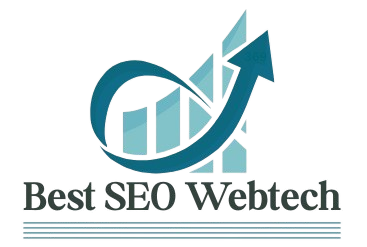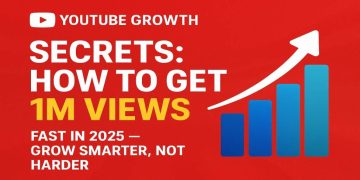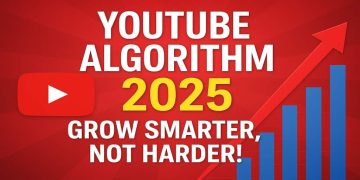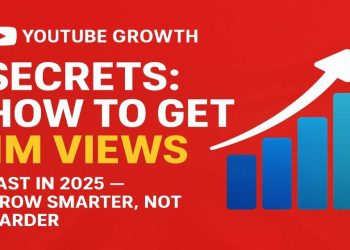A practical, detailed guide to the Google tools every SEO professional, content creator, and webmaster should master in 2025. Below you’ll find explanations, hands-on workflows, image/graph ideas, and safe citations to official Google documentation so you can act with confidence.
Why focus on Google tools in 2025?
Google’s ecosystem still shapes how pages are discovered, evaluated, and surfaced. Whether you’re optimizing for classic search results, localized map listings, or the emerging world of generative AI answers, Google’s official tools give you data, diagnostics, and ways to validate technical and content improvements.
Using the right Google tools together—Search Console for search signals, GA4 for behaviour and conversions, PageSpeed/Lighthouse for performance, Looker Studio for reporting, and structured-data tools for rich results—lets teams move from guesswork to evidence-driven SEO.
1. Google Search Console — Your Search Performance Command Center
Google Search Console (GSC) remains the single best free source for direct search data from Google: which queries bring impressions and clicks, which pages are indexed, and which technical issues (crawl errors, mobile usability, indexing problems) Google detects on your site.
Use GSC’s Performance report to identify pages with high impressions but low CTR, then test improved titles/meta descriptions or structured data. Use the Coverage and Enhancement reports to fix indexing problems and monitor rich results eligibility.
Actionable workflow:
- Open Performance → filter by page to find pages with impressions > 1,000 but CTR < 2%.
- Create a short test: rewrite title/meta with clearer benefit and ask AI to draft 3 variants; implement and monitor CTR over 2–4 weeks.
- Check Coverage → fix errors (server responses, blocked resources) and request reindexing for fixed pages.
Suggested graph (GSC):
Plot: Impressions vs CTR over last 90 days (line + area).
X-axis: Date (daily), Y-left: Impressions (area), Y-right: CTR (line).
Insight: Look for pages where impressions spike but CTR dips—those are headline/description opportunity pages.
2. Google Analytics 4 (GA4) — Measure Behavior, Conversions & Journeys
GA4 is the event-first analytics platform that combines web and app data and emphasizes privacy-aware modeling and predictive metrics. For SEO, GA4 helps you understand post-click behavior: bounce vs engaged session, pages-per-session, conversion events, and how organic users move through funnels. GA4’s explorations let you build segments (e.g., organic users who visited pricing) and compare different landing pages’ downstream conversion rates.
Actionable workflow:
- In GA4, create an exploration for ‘Organic Landing Pages’ and measure ‘Engaged Sessions’ and ‘Conversions’ per landing page.
- Prioritize pages with high traffic but low engagement—optimize on-page UX, internal links, or content depth.
- Link GA4 with Search Console for combined insights (search queries → landing pages → on-site behavior).
Suggested graph (GA4):
Plot: Conversion Rate (primary) and Average Engagement Time (secondary) by Landing Page (bar chart).
Insight: Which organic pages not only attract users but also convert—these are models to replicate.
3. PageSpeed Insights & Lighthouse — Performance is SEO (and UX)
PageSpeed Insights (PSI) runs Lighthouse audits and provides lab (Lighthouse) and field (CrUX) data for performance, accessibility, best practices, and SEO-related checks. Core Web Vitals (Largest Contentful Paint, Cumulative Layout Shift, Interaction to Next Paint / First Input Delay) continue to matter for rankings and, more importantly, user experience. Use PSI to find slow resources, render-blocking scripts, or oversized images.
Actionable workflow:
- Run PSI for priority landing pages. Note LCP, CLS, and INP (or FID if present).
- Fix top opportunities: optimize images (modern formats + responsive sizes), implement critical CSS, and lazy-load non-critical media.
- Re-run and track improvement; use Lighthouse CI for automated checks in your deployment pipeline if you control the site repo.
Suggested graph (Performance):
Plot: Core Web Vitals (LCP, CLS, INP) across top 10 landing pages (stacked bar or radar chart).
Insight: Identify pages with poor LCP (likely heavy hero images or slow server) and isolate fixes.
4. Looker Studio (formerly Data Studio) — Shareable SEO Dashboards
Looker Studio gives you a free, drag-and-drop way to build combined reports from Search Console, GA4, Google Ads, BigQuery, and other data sources. For teams, a shared dashboard that surfaces top queries, landing page conversions, trends, and performance diagnostics reduces time-to-insight and improves alignment with stakeholders. Create scheduled email reports for leadership with a top-3 wins/risks list each week.
Actionable workflow:
- Connect Search Console + GA4 + PageSpeed export to Looker Studio.
- Create a ‘SEO Health’ page: top impressions, pages with traffic but low engagement, pages failing Core Web Vitals, and open indexing errors.
- Schedule weekly PDF exports with an executive summary and 3 recommended actions.
Suggested dashboard panels:
1) Search Console: Top 20 queries + impressions/clicks/CTR.
2) GA4: Organic landing pages performance (engagement & conversions).
3) PageSpeed: LCP/CLS/INP trend for priority pages.
4) A small table of 'High impressions but low CTR' pages with action column.
5. Google Keyword Planner — Free Keyword Ideas & CPC Signals
Keyword Planner (in Google Ads) remains a practical source for keyword ideas and relative competitiveness or CPC signals which help infer commercial intent. Although it’s an ads tool, SEO teams use it for seed ideas and to discover related queries and seasonal patterns. Pair Keyword Planner outputs with Google Trends to validate rising interest.
Actionable workflow:
- Seed with 5 high-level terms; export related keywords and group by intent.
- Use CPC and competition values as a proxy for commercial intent—higher CPCs often indicate stronger purchase intent.
- Prioritize keywords with a blend of attainable competition and meaningful intent for your business.
Suggested chart (keyword validation):
Scatter plot: Average monthly searches (log scale) vs. CPC. Highlight keywords that are high intent (high CPC) but moderate volume—good targets for conversion pages.
6. Google Trends — Seasonal & Geographic Interest
Google Trends is invaluable for spotting rising queries, regional differences, and seasonality. Use Trends to refine targeting by location or to discover emerging long-tail queries. Trends can also guide content calendars: if a topic shows rising interest, publish timely, well-optimized content to capture the surge.
Actionable workflow:
- Compare 3–5 related queries over the last 12 months for your target country.
- Identify regions with the highest interest; tailor content or local landing pages accordingly.
- For rising queries, create a rapid content sprint (short, high-quality post + page optimised for that query).
7. Google Business Profile — Local Visibility & Maps
For local businesses, Google Business Profile (GBP) is essential. Keep your profile updated (hours, services, posts, photos), respond to reviews, and use GBP posts for local promotions. GBP signals (reviews, NAP consistency, relevance) directly affect map rankings and local pack visibility.
Actionable workflow:
- Ensure NAP (Name, Address, Phone) consistency across site and directories.
- Post weekly to your GBP and upload high-quality photos; encourage authentic reviews and respond professionally.
- Use GBP insights to see how customers find you and which queries lead to calls or direction requests.
8. Rich Results Test & Structured Data — Earn Enhanced SERP Features
Structured data (JSON-LD, schema.org) helps Google understand page content and can unlock rich results—FAQ, HowTo, Recipe, product rich snippets, and more. Use the Rich Results Test to validate whether your markup qualifies for rich features and the Structured Data docs to follow Google’s guidelines. Correct, conservative use of structured data increases the chance of enhanced SERP features (and higher CTR).
Actionable workflow:
- Add concise schema for article, product, or FAQ where relevant (JSON-LD).
- Run the Rich Results Test and fix errors or warnings; validate on a staging URL before publishing.
- Monitor Search Console Enhancements for changes in rich result eligibility.
Quick JSON-LD FAQ example
{"@context":"https://schema.org","@type":"FAQPage","mainEntity":[{"@type":"Question","name":"What is Core Web Vitals?","acceptedAnswer":{"@type":"Answer","text":"Core Web Vitals are a set of metrics measuring page speed and user experience, including LCP, CLS, and INP."}}]}
9. Mobile-Friendly Test & AMP (Where Appropriate)
Mobile-first indexing is the norm; always check mobile usability and render on smaller screens. Google’s Mobile-Friendly Test helps detect tap-size issues, viewport configuration problems, and font-size issues. AMP has a narrower use case in 2025 but can still be useful for ultra-fast mobile content experiences; however validate current program support before building in AMP.
Tip: Ensure images, CTAs, and forms are mobile-optimized; large hero images must be responsive and properly sized to avoid LCP penalties.
10. Google Search Console Insights — Content-Focused Signals
Search Console Insights combines data from Search Console and Google Analytics (or GA4) to present content-focused metrics for creators—how content is discovered, top-performing queries, and referral sources. It helps content teams quickly spot which pieces perform well and why. (Newer improvements in Insights in 2025 aimed to make this accessible to creators and non-technical.
11. Google Ads (for Intent Signals and Testing Titles)
While Ads is paid, it provides real-world intent signals: which headlines convert, which CTAs persuade, and which value propositions attract clicks. Use Ads for headline/CTA testing before applying winning language to organic meta titles or landing page CTAs. Ads also integrates easily with Keyword Planner and GA4.
12. Google Search Central — Keep Up with Official Guidance
Bookmark Google Search Central (the developer docs and blog). Google frequently updates recommendations about indexing, structured data, and content policies. Following official channels prevents optimization techniques that might later be deprecated and helps you align with what Google says will work.
How to explain SEO concepts visually (images & graphs)
Visuals speed comprehension. Below are practical, ready-to-use visual types, what data to feed, and how to caption them so readers (and editors) understand the insight quickly.
A) Impressions vs CTR (GSC) — headline opportunity map
Data: Use Search Console data for impressions and CTR per page (90 days). Visual: two-series line/area chart with impressions (area) and CTR (line). Caption: “Pages with rising impressions but falling CTR are headline or snippet optimization opportunities.”
B) Landing Page Engagement vs Conversions (GA4)
Data: GA4 segment of organic landing pages: engaged sessions, average engagement time, conversion events. Visual: horizontal bar chart ranking pages by conversions with a color overlay for engagement. Caption: “High traffic + low conversion pages need content or funnel fixes; low traffic + high conversion are potential templates to clone.”
C) Core Web Vitals table (PSI)
Data: LCP, CLS, INP for top pages. Visual: table + conditional color (green/yellow/red). Caption: “Technical priority list — fix red LCP first (likely heavy hero images or server latency).”
Graph creation quick-guide (Looker Studio / Sheets):
1) Export Search Console query/page CSV (90 days).
2) Import into Looker Studio (or Google Sheets).
3) Build a Time Series: Impressions (area) + CTR (line, secondary axis).
4) Add a short annotation for any spike dates (content updates, promotions).
SEO Playbook — 6 Practical Steps Using Google Tools
- Audit (Search Console + PSI): Run Coverage, Inspect key pages, and run PageSpeed audits for top landing pages.
- Prioritize (Looker Studio): Build a simple dashboard combining impressions, engagement, and Core Web Vitals to create a top-10 action list.
- Test (Ads & Keyword Planner): Validate headlines and CTAs with small paid tests to gather intent signals.
- Optimize (Content & Tech): Use GSC issues, PSI recommendations, and structured data fixes to push pages toward eligibility for rich results.
- Measure (GA4): Track downstream conversions and engagement to ensure organic traffic quality improves, not just volume.
- Report (Looker Studio): Automate weekly snapshots with recommended actions — keep the list to 3 items so teams can deliver.
Responsible notes — what to avoid
- Avoid overloading pages with schema that isn’t factual — Google discourages misleading rich results.
- Don’t chase every metric—prioritize business outcomes (leads, signups, revenue) over vanity metrics.
- Respect user privacy and consent when using GA4 and measurement features; follow local regulations.
Related – The Ultimate Guide to Backlinks: Skyrocketing Your Google Rankings























